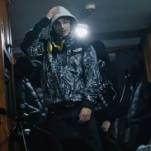Thing we were happiest to learn: Action Park wasn’t able to spread its mayhem up and down the East Coast. A second park was attempted in Tannersville, Pennsylvania, called Pocono Action Park, and a third in Pine Hill, New Jersey called Action Mountain. The Pennsylvania park managed to stay open from 1980 to 1991, but Action Mountain ended up racking up just shy of $400,000 in back taxes in only two years. The park was sold to pay the debt and turned into a golf course.
Thing we were unhappiest to learn: Unsafe rides were only the tip of the iceberg. Action Park had a list of problems as long as its roller-coaster lines. To start, Action Park was one of the country’s first-ever water parks, so many ride designs were untested, and Wikipedia suggests that “ride designers may have had insufficient training in physics or engineering.” The park also skimped on maintenance, and hired inexperienced teenagers almost exclusively, described here as “under-aged, undertrained, and often under-the-influence.” One particular snack bar was a favorite employee hangout, as it was adjacent to a water ride called Surf Hill, offering views of the ride’s “serious injuries, lost bikini tops, or both.”
Even when rides were designed to be safe, the staff often took pains to make them unsafe. The Super Go Karts were intended to have a top speed of 20 mph, but park staffers learned that wedging a tennis ball into the engine could give the cars a top speed of 50 mph, leading to some very dangerous games of high-speed bumper cars. Employees were also known to ride the park’s race cars on nearby Route 94.
The park advertised heavily to the area’s Spanish-speaking population, but had few employees who spoke the language, and no signs posted in Spanish, leading to frequent confusion as to what the park’s few safety rules actually were. And even when visitors could read the rules, they often ignored them with no consequence. The park also sold beer to guests, and was no more stringent about enforcing underage drinking as it was about safety, so many, if not most of the people injured at the park were drunk.
Also noteworthy: Setting aside the criminal negligence that permeated Action Park, it did have many ambitious ride designs. Besides essentially pioneering the water park, land-based rides included Battle Action Tanks, which could fire tennis balls at targets that would freeze an opponents’ vehicle (although patrons often fired at defenseless staff instead of each other); America’s first skydiving simulator, The Aerodium; and the ride most associated with Action Park’s daredevil lunacy, the Cannonball Loop—a waterslide with a rollercoaster-style loop-de-loop, which only operated a handful of times, and never for more than a month at a stretch, because of the near-guarantee of injury. The park also had a bungee-jump tower with the best ride name in the history of amusement parks, the Snapple Snap-Up Whipper Snapper.
Best link to elsewhere on Wikipedia: For those simply interested in odd goings on in the Garden State, look no further than Weird NJ, a magazine that started its life as a handmade zine, and evolved into a twice-yearly newsstand publication covering all manner of strangeness, including UFO signings, the “Hookerman” Lights, Shades Of Death Road, and the Evil Clown Of Middleton.
Further down the Wormhole: The macabre reader can visit links like dismembered, drowned, dislocated, and other forms of distress that don’t start with “D.” But of those, dismembered is a word that comes up often in Japanese mythology. While that page covers stories from centuries past, there’s also a page for more modern fables, Japanese Urban Legends. We’ll peruse that list of potential horror-movie plots next week.








































